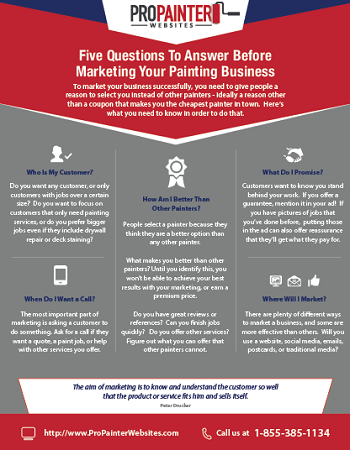Discover Just How Seasonal Impacts Can Affect The Efficiency Of Business Exterior Painting And Discover One Of The Most Favorable Times To Make Sure Resilient Results For Your Project
Discover Just How Seasonal Impacts Can Affect The Efficiency Of Business Exterior Painting And Discover One Of The Most Favorable Times To Make Sure Resilient Results For Your Project
Blog Article
Produced By-Regan Chaney
When you're planning an industrial outside painting task, seasonal factors can make or damage your results. You'll want to consider just how temperature level and moisture impact paint application and drying times. Selecting the ideal period can ensure your paint sticks correctly and lasts much longer. However which periods are really the very best for this type of work? Allow's discover the crucial elements that can affect your project's success.
The Impact of Temperature Level on Paint Application
When you're preparing an industrial outside paint job, the temperature can substantially influence how well the paint sticks and dries out.
Preferably, you wish to paint when temperatures vary in between 50 ° F and 85 ° F. If it's as well chilly, the paint may not cure properly, bring about problems like peeling off or fracturing.
On the other side, if it's too warm, the paint can dry out also promptly, avoiding correct bond and resulting in an uneven finish.
You need to likewise consider the moment of day; morning or late afternoon uses cooler temperature levels, which can be much more beneficial.
Constantly check the supplier's referrals for the details paint you're utilizing, as they frequently give advice on the perfect temperature variety for optimal outcomes.
Humidity and Its Effect on Drying Times
Temperature level isn't the only environmental variable that affects your industrial external paint project; moisture plays a significant duty as well. High humidity degrees can slow down drying out times considerably, affecting the total quality of your paint job.
When the air is filled with wetness, the paint takes longer to treat, which can cause concerns like poor bond and a greater risk of mold development. If you're painting on a particularly damp day, be prepared for prolonged delay times between coats.
It's essential to monitor local weather and plan as necessary. Ideally, aim for humidity degrees in between 40% and 70% for optimum drying.
Keeping these consider mind ensures your job remains on track and delivers a long lasting coating.
Best Seasons for Commercial Outside Painting Projects
What's the best time of year for your commercial exterior painting jobs?
Springtime and early loss are usually your best options. During these seasons, temperatures are moderate, and moisture degrees are usually reduced, creating suitable conditions for paint application and drying.
Stay clear of summertime's intense heat, which can cause paint to completely dry too quickly, leading to poor adhesion and coating. In a similar way, winter's cool temperature levels can impede proper drying and treating, taking the chance of the long life of your paint job.
Go for straight line builders with temperatures between 50 ° F and 85 ° F for optimum results. Remember to check the regional weather report for rain, as wet conditions can ruin your project.
Preparation around these variables ensures your paint project runs smoothly and lasts longer.
Verdict
To conclude, planning your commercial exterior paint tasks around seasonal factors to consider can make a substantial difference in the outcome. By organizing work throughout the suitable temperatures and moisture degrees, you'll guarantee much better attachment and drying out times. Bear in mind to keep an eye on local weather prediction and pick the right time of year-- spring and early fall are your best options. Taking https://house-painters-near-me31975.liberty-blog.com/34562848/uncover-the-crucial-queries-to-make-before-employing-house-painters-and-expose-the-strategies-for-improving-your-home-with-a-fresh-paint-work will aid you achieve a long lasting and professional finish that lasts.
